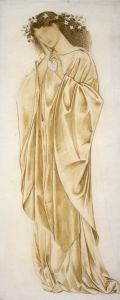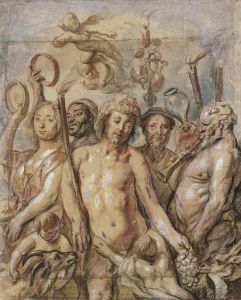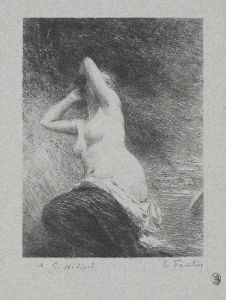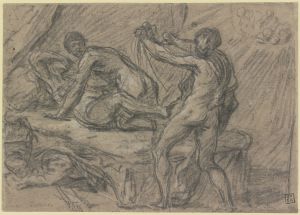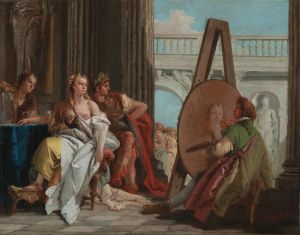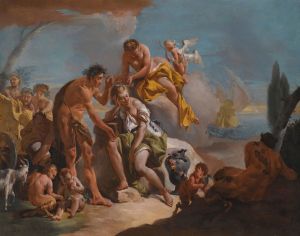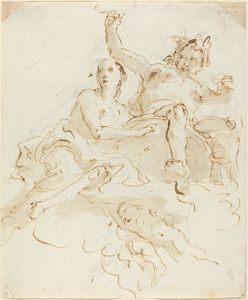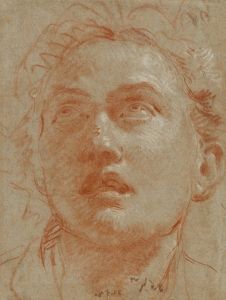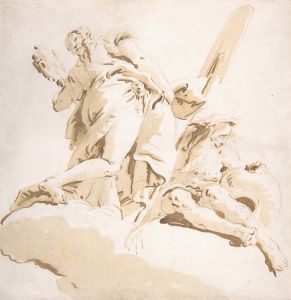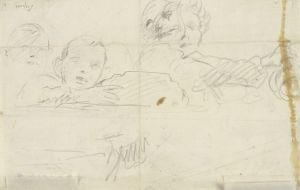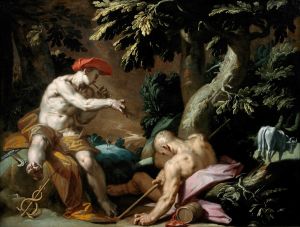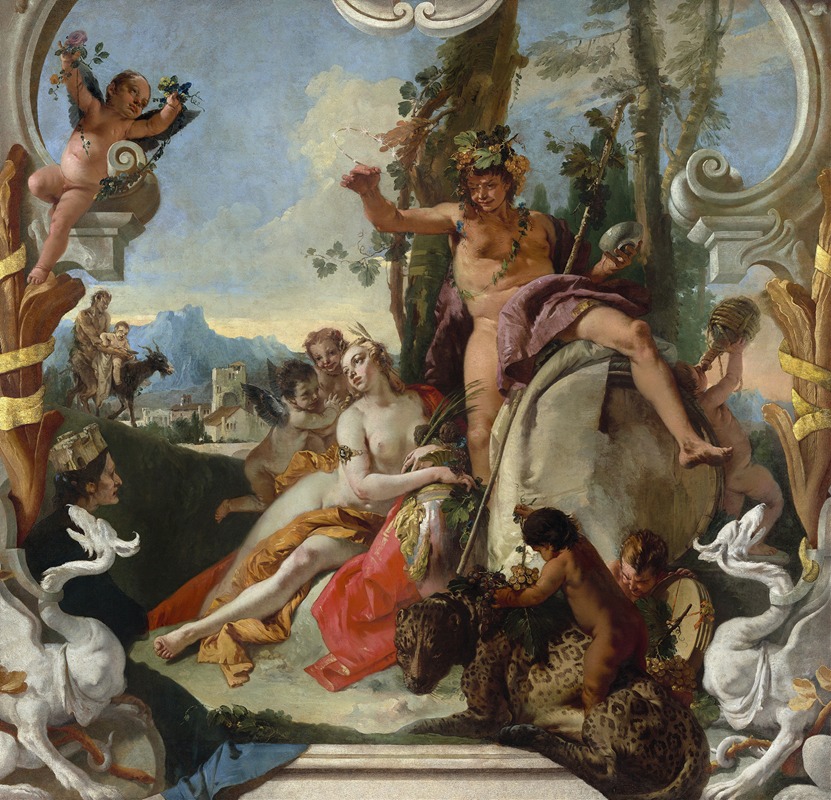
Bacchus and Ariadne
A hand-painted replica of Giovanni Battista Tiepolo’s masterpiece Bacchus and Ariadne, meticulously crafted by professional artists to capture the true essence of the original. Each piece is created with museum-quality canvas and rare mineral pigments, carefully painted by experienced artists with delicate brushstrokes and rich, layered colors to perfectly recreate the texture of the original artwork. Unlike machine-printed reproductions, this hand-painted version brings the painting to life, infused with the artist’s emotions and skill in every stroke. Whether for personal collection or home decoration, it instantly elevates the artistic atmosphere of any space.
Giovanni Battista Tiepolo's Bacchus and Ariadne is a painting that reflects the artist's mastery of the Rococo style and his ability to depict mythological themes with dramatic flair and vibrant color. Created in the 18th century, the work portrays the mythological story of Bacchus, the god of wine, and Ariadne, the mortal woman he rescues and later marries. The painting is celebrated for its dynamic composition, luminous palette, and the theatricality characteristic of Tiepolo's work.
The subject of the painting is drawn from classical mythology, specifically the tale of Ariadne as recounted in ancient sources such as Ovid's Metamorphoses. According to the myth, Ariadne was abandoned by the hero Theseus on the island of Naxos after helping him escape the labyrinth of Crete. Bacchus, passing by the island, finds Ariadne and falls in love with her. He ultimately transforms her into an immortal and places her crown among the stars as a constellation.
Tiepolo's depiction of this story captures the moment of Bacchus's arrival or their union, depending on the interpretation of the scene. The figures are rendered with a sense of movement and emotion, typical of Tiepolo's ability to convey narrative through gesture and expression. Bacchus is often shown as a youthful and energetic figure, while Ariadne is depicted with grace and beauty, emphasizing her role as both a mortal and a divine consort.
The painting exemplifies Tiepolo's skill in using light and color to create a sense of depth and atmosphere. His use of soft, pastel tones and fluid brushstrokes enhances the dreamlike quality of the scene, while the dramatic contrasts of light and shadow add a sense of immediacy and drama. The composition is carefully balanced, with the figures arranged in a way that guides the viewer's eye across the canvas, highlighting the central interaction between Bacchus and Ariadne.
Tiepolo was one of the most prominent painters of the 18th century, known for his large-scale frescoes and mythological subjects. His work was highly sought after by patrons across Europe, and he became particularly renowned for his ability to combine classical themes with the decorative elegance of the Rococo style. Bacchus and Ariadne is a testament to his artistic versatility and his deep engagement with the classical tradition.
The painting is housed in the National Gallery in London, where it remains a significant example of Tiepolo's contribution to European art. It continues to be admired for its technical brilliance, its evocative storytelling, and its place within the broader context of 18th-century painting.





